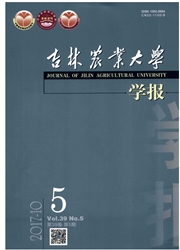

 中文摘要:
中文摘要:
应用随机扩增多态性DNA(RAPD)标记,对东北地区不同狍种群的遗传变异进行了研究。20个随机引物共检出123条带,其中114条带表现出多态性,多态率92.7%。多态条带比率(PP8)、Shannon多样性指数(I)及Nei’8基因多样性指数(h)均显示东北地区狍具有较为丰富的遗传多样性。东北地区长白山、大兴安岭和完达山3个地理种群中,大兴安岭种群遗传多样性最低。采用Nei’s遗传距离、基因分化系数(Gst)、Shannon多样性指数阶层分析和AMOVA分析各种群遗传分化,结果显示,东北地区狍种群存在一定的遗传分化,但分化程度不高,遗传变异主要来自种群内。
 英文摘要:
英文摘要:
The random amplified polymorphic DNA (RAPD) markers were used to analyze genetic diversity among 3 geographical populations of the roe deer ( Capreolus capreolus ) in northeastern China. 114 bands expressed polymorphism among 123 bands tested and polymorphic percentage was 92.7% by using 20 arbitrary primers. The results showed that the northeastern roe deer had high genetic diversity in percentage of polymorphic bands (PPB), Shannon's information index (I) and Nei's gene diversity (h). Among 3 geographic populations, Great Khinghan Mountain population had the lowest genetic diversity compared with Changbai Mountain and Wanda Mountain populations. In population genetic differentiation analysis, Nei's genetic distance, the coefficient of gene differentiation ( Gst ), the partitioning of the Shannon diversity and analysis of molecular variance (AMOVA) were used and the results showed that the genetic differentiation degree between populations was lower and the hereditary variation primarily came from within population.
 同期刊论文项目
同期刊论文项目
 同项目期刊论文
同项目期刊论文
 期刊信息
期刊信息
